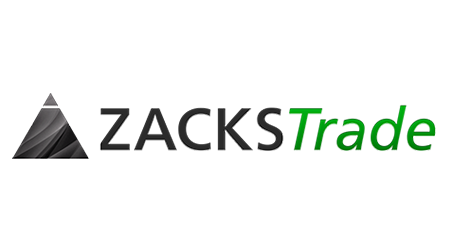
- Trade stocks, options, ETFs, mutual funds, alternative asset funds
- $0 commission on stocks, ETFs and options with no options contract fees
- Get up to $1,000 in stock when you open and fund a new account within 30 days
- Access to a financial planner
Caterpillar is a farm & heavy construction machinery business based in the US. Caterpillar shares (CAT) are listed on the NYSE and all prices are listed in US Dollars. Its last market close was $288.08 – a decrease of 12.62% over the previous week. Caterpillar employs 112,900 staff and has a trailing 12-month revenue of around $64.8 billion.



The Finder Score crunches 147 key metrics we collected directly from 18+ brokers and assessed each provider’s performance based on nine different categories, weighing each metric based on the expertise and insights of Finder’s investment experts. We then scored and ranked each provider to determine the best brokerage accounts.
We update our best picks as products change, disappear or emerge in the market. We also regularly review and revise our selections to ensure our best provider lists reflect the most competitive available.
Paid non-client promotion. Finder does not invest money with providers on this page. If a brand is a referral partner, we're paid when you click or tap through to, open an account with or provide your contact information to the provider. Partnerships are not a recommendation for you to invest with any one company. Learn more about how we make money.
Finder is not an advisor or brokerage service. Information on this page is for educational purposes only and not a recommendation to invest with any one company, trade specific stocks or fund specific investments. All editorial opinions are our own.
| Latest market close | $288.08 |
|---|---|
| 52-week range | $304.83 - $416.97 |
| 50-day moving average | $350.18 |
| 200-day moving average | $361.07 |
| Wall St. target price | $386.82 |
| PE ratio | 13.8667 |
| Dividend yield | $5.53 (1.69%) |
| Earnings per share (TTM) | $22.05 |
The technical analysis gauge below displays real-time ratings for the timeframes you select. This is not a recommendation, however. It represents a technical analysis based on the most popular technical indicators: Moving Averages, Oscillators and Pivots. Finder might not concur and takes no responsibility.
This chart is not advice or a guarantee of success. Rather, it gauges the real-time recommendations of three popular technical indicators: moving averages, oscillators and pivots. Finder is not responsible for how your stock performs.
Historical closes compared with the close of $305.76 from 2025-04-03
| 1 week (2025-03-28) | -7.26% |
|---|---|
| 1 month (2025-03-05) | -9.67% |
| 3 months (2025-01-03) | -15.95% |
| 6 months (2024-10-04) | -23.00% |
| 1 year (2024-04-05) | -19.39% |
|---|---|
| 2 years (2023-04-05) | 48.31% |
| 3 years (2022-04-05) | 50.03% |
| 5 years (2020-04-03) | 196.59% |
Valuing Caterpillar stock is incredibly difficult, and any metric has to be viewed as part of a bigger picture of Caterpillar's overall performance. However, analysts commonly use some key metrics to help gauge the value of a stock.
Caterpillar's current share price divided by its per-share earnings (EPS) over a 12-month period gives a "trailing price/earnings ratio" of roughly 14x. In other words, Caterpillar shares trade at around 14x recent earnings.
That's relatively low compared to, say, the trailing 12-month P/E ratio for the NASDAQ 100 at the end of 2019 (27.29). The low P/E ratio could mean that investors are pessimistic about the outlook for the shares or simply that they're under-valued.
Caterpillar's "price/earnings-to-growth ratio" can be calculated by dividing its P/E ratio by its growth – to give 1.5396. A low ratio can be interpreted as meaning the shares offer better value, while a higher ratio can be interpreted as meaning the shares offer worse value.
The PEG ratio provides a broader view than just the P/E ratio, as it gives more insight into Caterpillar's future profitability. By accounting for growth, it could also help you if you're comparing the share prices of multiple high-growth companies.
Caterpillar's EBITDA (earnings before interest, taxes, depreciation and amortisation) is $15.6 billion.
The EBITDA is a measure of a Caterpillar's overall financial performance and is widely used to measure a its profitability.
| Revenue TTM | $64.8 billion |
|---|---|
| Operating margin TTM | 19.19% |
| Gross profit TTM | $21.1 billion |
| Return on assets TTM | 9.68% |
| Return on equity TTM | 55.33% |
| Profit margin | 16.65% |
| Book value | $40.78 |
| Market Capitalization | $146.1 billion |
TTM: trailing 12 months
Environmental, social and governance (known as ESG) criteria are a set of three factors used to measure the sustainability and social impact of companies like Caterpillar.
When it comes to ESG scores, lower is better, and lower scores are generally associated with lower risk for would-be investors.
Total ESG risk: 40.85
Socially conscious investors use ESG scores to screen how an investment aligns with their worldview, and Caterpillar's overall score of 40.85 (as at 12/31/2018) is pretty weak – landing it in it in the 86th percentile of companies rated in the same sector.
ESG scores are increasingly used to estimate the level of risk a company like Caterpillar is exposed to within the areas of "environmental" (carbon footprint, resource use etc.), "social" (health and safety, human rights etc.), and "governance" (anti-corruption, tax transparency etc.).
Environmental score: 13.72/100
Caterpillar's environmental score of 13.72 puts it squarely in the 4th percentile of companies rated in the same sector. This could suggest that Caterpillar is a leader in its sector terms of its environmental impact, and exposed to a lower level of risk.
Social score: 21.74/100
Caterpillar's social score of 21.74 puts it squarely in the 4th percentile of companies rated in the same sector. This could suggest that Caterpillar is a leader in its sector when it comes to taking good care of its workforce and the communities it impacts.
Governance score: 8.39/100
Caterpillar's governance score puts it squarely in the 4th percentile of companies rated in the same sector. That could suggest that Caterpillar is a leader in its sector when it comes to responsible management and strategy, and exposed to a lower level of risk.
Controversy score: 4/5
ESG scores also evaluate any incidences of controversy that a company has been involved in. Caterpillar scored a 4 out of 5 for controversy – the second-lowest score possible, reflecting that Caterpillar has a damaged public profile.
Caterpillar Inc was last rated for ESG on: 2019-01-01.
| Total ESG score | 40.85 |
|---|---|
| Total ESG percentile | 86.14 |
| Environmental score | 13.72 |
| Environmental score percentile | 4 |
| Social score | 21.74 |
| Social score percentile | 4 |
| Governance score | 8.39 |
| Governance score percentile | 4 |
| Level of controversy | 4 |
Dividend payout ratio: 25.25% of net profits
Recently Caterpillar has paid out, on average, around 0% of net profits as dividends. That has enabled analysts to estimate a "forward annual dividend yield" of 0% of the current stock value. This means that over a year, based on recent payouts (which are sadly no guarantee of future payouts), Caterpillar shareholders could enjoy a 0% return on their shares, in the form of dividend payments. In Caterpillar's case, that would currently equate to about $5.53 per share.
While Caterpillar's payout ratio might seem fairly standard, it's worth remembering that Caterpillar may be investing much of the rest of its net profits in future growth.
Caterpillar's most recent dividend payout was on 19 February 2025. The latest dividend was paid out to all shareholders who bought their shares by 20 January 2025 (the "ex-dividend date").
Caterpillar's shares were split on a 2:1 basis on 13 July 2005 . So if you had owned 1 share the day before before the split, the next day you'd have owned 2 shares. This wouldn't directly have changed the overall worth of your Caterpillar shares – just the quantity. However, indirectly, the new 50% lower share price could have impacted the market appetite for Caterpillar shares which in turn could have impacted Caterpillar's share price.
Over the last 12 months, Caterpillar's shares have ranged in value from as little as $304.8333 up to $416.9713. A popular way to gauge a stock's volatility is its "beta".
Beta is a measure of a share's volatility in relation to the market. The market (NYSE average) beta is 1, while Caterpillar's is 1.198. This would suggest that Caterpillar's shares are a little bit more volatile than the average for this exchange and represent, relatively-speaking, a slightly higher risk (but potentially also market-beating returns).
Caterpillar Inc. manufactures and sells construction and mining equipment, off-highway diesel and natural gas engines, industrial gas turbines, and diesel-electric locomotives in the United States and internationally. Its Construction Industries segment offers asphalt pavers, cold planers, compactors, forestry machines, material handlers, motor graders, pipelayers, road reclaimers, telehandlers, track-type tractors, and track and wheel excavators; compact track, wheel, track-type, backhoe, and skid steer loaders; and related parts and tools. The company's Resource Industries segment provides electric rope and hydraulic shovels, draglines, rotary drills, hard rock vehicles, tractors, mining trucks, wheel loaders, off-highway and articulated trucks, wide-body trucks, wheel tractor scrapers and dozers, fleet management products, landfill and soil compactors, machinery components, autonomous ready vehicles and solutions, work tools, and safety services and mining performance solutions, as well as related parts and services. Its Energy & Transportation segment offers reciprocating engine powered generator sets; reciprocating engines, drivetrain, and integrated systems and solutions; turbines, centrifugal gas compressors, and related services; and diesel-electric locomotives and components, and other rail-related products. The company's Financial Products segment provides operating and finance leases, installment sale contracts, revolving charge accounts, repair/rebuild financing services, working capital loans, and wholesale financing; and insurance and risk management products and services. Its All Other segment offers wear and maintenance components; parts distribution; logistics solutions and distribution services; dealer portfolio management, and brand management and marketing strategy services; and digital investment services.
Trade commission-free stocks and ETFs with Opto, and stay ahead by spotting emerging trends through thematic investing.
Here’s the scoop on Ark7, what it is and how it works.
Explore the best bonuses for opening a new brokerage account.
Some of the best stock trading apps for beginners include SoFi, Robinhood, Public, Stash, Opto and more. Compare your options here.
Compare pros, cons, research tools and reviews for these two trading platforms.
Check out our picks of the best trading apps for beginners, options traders, hands-off investors and more.
A beginner-friendly investing platform with fractional shares and no commissions on stocks and ETFs.
See our picks of the best brokerage accounts, including Fidelity, SoFi, Charles Schwab, Public, Robinhood and E*TRADE .
SoFi Invest is a no-fee commissions platform with both active and automated investment accounts.
A deep dive into the highlights and limitations of Robinhood.